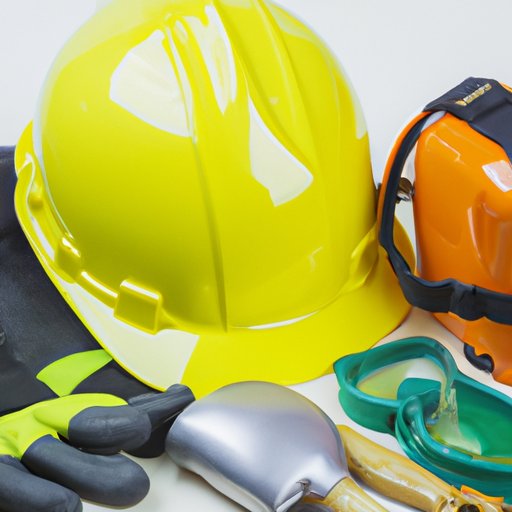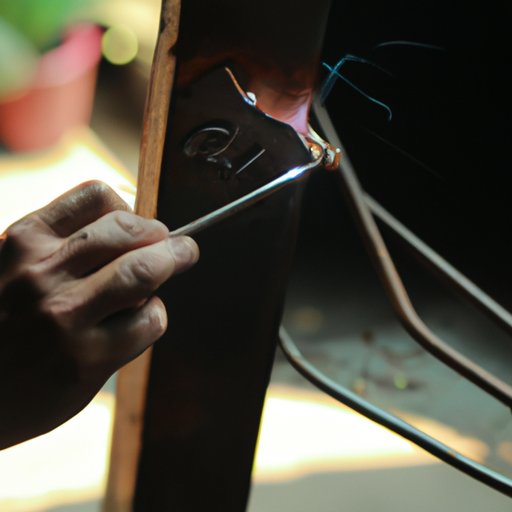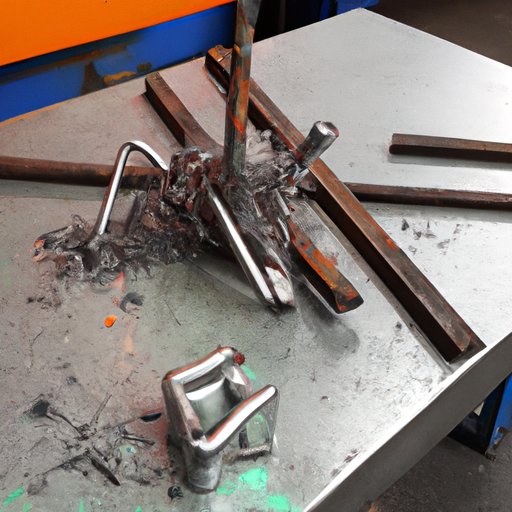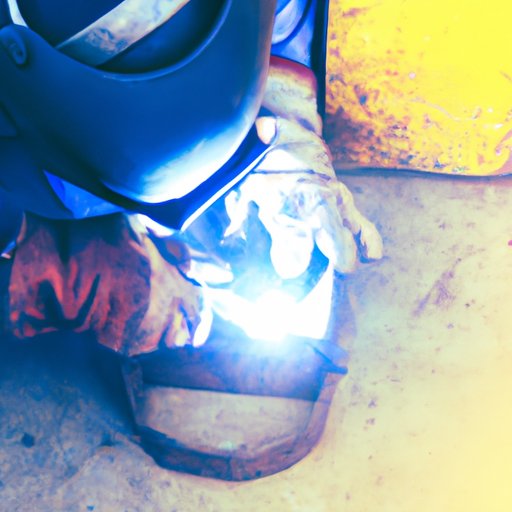Introduction
Welding is a specialized process used to join two pieces of metal together. It’s a skill that is essential in many industries, such as automotive repair and manufacturing, construction, and plumbing. Learning how to weld can be a great way to gain valuable skills and open up new career opportunities.
Whether you’re a hobbyist or a professional looking to expand your capabilities, understanding the basics of welding is important. With the right knowledge, safety equipment, and practice, you can learn how to weld like a pro.
Research the Different Types of Welding and Choose the Right One for Your Project
Before you start welding, it’s important to understand the different types of welding and which one is best suited for your project. There are several different types of welding processes, including oxyacetylene, MIG (metal inert gas), TIG (tungsten inert gas), and stick welding. Each type of welding has its own advantages and disadvantages, so it’s important to do your research and choose the right one for your needs.
For example, oxyacetylene welding is the oldest and most versatile type of welding. It uses a combination of oxygen and acetylene gases to create a high-temperature flame that melts the metal, allowing it to be joined together. This type of welding works well on a variety of metals, but it is time-consuming and requires special safety equipment.
MIG welding, on the other hand, is a faster and easier process that uses a wire electrode and a shielding gas to create an arc. It is often used for welding aluminum and stainless steel, and is suitable for both thin and thick metals. However, it can be difficult to control and requires a steady hand.
TIG welding is similar to MIG welding, but uses a non-consumable tungsten electrode instead of a wire electrode. This type of welding is best suited for thin metals, and is often used in automotive repair and fabrication. It is more precise than MIG welding, but requires more skill and patience.
Finally, stick welding is the simplest and most affordable type of welding, and is often used for outdoor projects and repairs. It uses a consumable electrode and a welding power source to create an electric arc, and can be used on a wide range of metals. However, it is difficult to control and requires a lot of practice to master.

Gather the Necessary Safety Equipment and Supplies
One of the most important steps when learning how to weld is gathering the necessary safety equipment and supplies. Welding is an inherently dangerous activity, so it’s important to take all the necessary precautions to ensure your safety. The basic safety equipment you will need includes a welding helmet, gloves, and protective clothing. You should also make sure you have a fire extinguisher and a first aid kit handy in case of an emergency.
In addition to safety equipment, you’ll also need welding supplies such as rods, fluxes, and electrodes. You can find these items at your local hardware store or online. It’s important to purchase the right type of supplies for your project, as using the wrong materials could lead to poor results or even injury.

Learn the Basics of Welding Theory
Once you’ve gathered the necessary safety equipment and supplies, it’s time to learn the basics of welding theory. Understanding the principles of welding is essential for producing quality welds. To get started, you should familiarize yourself with terms such as amperage, voltage, and arc length. These terms refer to the amount of electricity used during welding, and can affect the quality of the weld.
You should also learn about the different types of joints used in welding. The most common types of joints are butt, lap, corner, and T-joints. Knowing how to properly prepare each type of joint will help you produce better welds.
Finally, it’s important to understand the basics of welding metallurgy. This involves studying the properties of the metals being welded, such as their melting point, hardness, and ductility. Knowing these properties can help you determine the correct welding techniques and settings to use for your project.

Practice on Scrap Metal Before Starting a Project
Once you’ve gotten the hang of welding theory, it’s time to start practicing. Before attempting to weld on a project, it’s a good idea to practice on scrap metal. This will allow you to get a feel for the welding process and give you an opportunity to make mistakes without worrying about ruining your project. Plus, it’s a great way to save money on supplies.
When practicing, it’s important to focus on technique. Pay close attention to the angle of the torch and the speed of the weld. You should also practice making different types of welds, such as butt, lap, and corner joints. With enough practice, you’ll soon be able to produce quality welds on a variety of metals.
Understand the Importance of Quality Welds
Once you’ve mastered the basics of welding, it’s important to understand the importance of quality welds. Poorly done welds can lead to weak spots and structural failures, which can be hazardous and potentially deadly. To ensure the integrity of your welds, it’s important to inspect them closely and look for any imperfections.
It’s also important to use the right welding technique for the job. Each type of metal requires a different welding technique and settings, so it’s important to do your research and use the correct ones for your project. Doing so will help you produce strong, long-lasting welds.
Troubleshoot Common Welding Problems
Even if you’ve done your research and practiced extensively, you may still encounter problems while welding. Common welding issues include porosity, warping, and cracking. Porosity occurs when air bubbles form in the weld, warping happens when the metal bends or distorts, and cracking occurs when the metal splits along the weld line.
If you encounter any of these problems, it’s important to troubleshoot them quickly and effectively. The first step is to identify the cause of the problem. Once you know the cause, you can adjust your welding technique and settings accordingly. For example, if you’re experiencing porosity, you may need to reduce the amperage or increase the travel speed.
Conclusion
Learning how to weld is a great way to gain valuable skills and expand your career opportunities. With the right knowledge, safety equipment, and practice, you can learn how to weld like a pro. Research the different types of welding, gather the necessary supplies, and practice on scrap metal before starting a project. Understand the importance of quality welds, and be prepared to troubleshoot any common welding problems.
(Note: Is this article not meeting your expectations? Do you have knowledge or insights to share? Unlock new opportunities and expand your reach by joining our authors team. Click Registration to join us and share your expertise with our readers.)
